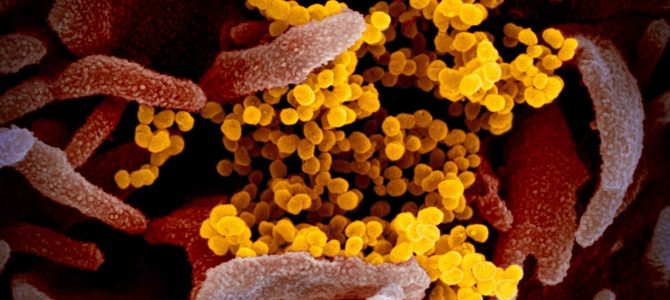
Coronavirus is the latest in a long line of infectious disease threats that have garnered the attention of the public and health officials around the world. As of this weekend, more than 85,400 people have been confirmed with the SARS CoV2 (Covid-19), and nearly 3,000 deaths have resulted.
Of those numbers, nearly 80,000 occurred in China. Wuhan, where the threat began, is the ninth most populated city in China, with nearly 19 million citizens in the metro area. The numbers in China may reflect the dynamics of this infection in a densely populated city.
Outside of China, the Covid-19 virus has been identified in more than 50 countries and the World Health Organization has designated the threat as very high within China and the world. However, by the conventional definition of a pandemic (“occurring over a wide geographic area and affecting an exceptionally high proportion of the population”) we are not there yet.
What Is a Coronavirus?
Let’s take a moment to examine this outbreak, Coronaviruses are not new. In fact, four common coronaviruses frequently infect the human population. These four coronaviruses, along with several hundred other viruses from the Adenovirus (9 types), Reovirus (3 types), Rhinovirus (113 types), Paramyxovirus (4 types), and Orthomyxovirus (3 types and multiple subtypes) families are responsible for countless lost days of illness.
The U.S. Centers for Disease Control reports 22 million school days are lost each year in the United States because of these pathogens. Some estimates have reported that Americans have and estimated 1 billion colds a year.
In contrast to most of the common infections that we experience each year that cause upper-respiratory symptoms like coughing, sneezing, and shortness of breath, this pathogen seems to prefer the deeper portions of the lung. This means many people may not display the typical symptoms that we see with colds and flu.
Notwithstanding the “common” viruses that we deal with every day, there are occasional outbreaks of novel or new types of viruses that humans have not previously had exposure. When a virus or pathogen is introduced into any new population (hosts), a highly coordinated dance begins between the virus and the new host.
When an Infection Begins
The virus is in a new environment, which likely does not have appropriate defenses and cannot easily fight back. In these cases, the virus will often have the upper hand in reproducing since it is poorly adapted to this new human host. It can reproduce to such high efficiency that it severely sickens or kills the host.
The virus and its new host need to come to an equilibrium or balance where both can survive. From a biological perspective, this is not beneficial to the host or even the virus if severe illness or death occurs. We can perhaps see examples of both within this Covid-19 outbreak. Some patients have become very sick and died as a result.
We have also seen examples of patients who are infected but do not display any signs or symptoms. These may be examples of both sides of the coin, in older people who also have chronic conditions the virus and host are poorly matched, and the host cannot defend itself.
On the flip side, younger and healthier individuals are able to cope with the infection and hold the virus in check. In these circumstances, the patient may be infected and asymptomatic but still contagious. Data suggests that 80 percent of people who are infected may have very mild symptoms or no symptoms at all.
Most People with Coronavirus Survive
The key point to keep in mind is that tens of millions of people around the world are infected with these viruses with relatively mild and self-limiting disease. The populations that tend to have difficulty with respiratory types of infections are those that are very young, the elderly, and those with co-morbid, chronic conditions like lung disease, cardiovascular disease, immune deficiency, cancer, and autoimmune disorders.
Early reports from China indicate that patients who have experienced severe disease have been more frequently male, 50 and older who have conditions like diabetes, cardiovascular disease, chronic respiratory disease, hypertension, and cancer. Data also appears to suggest that the Covid-19 virus does not appear to target children.
Very few infections have been reported in children, and of those that have been reported, the symptoms have been very mild or unapparent. Whether children can be asymptomatic carriers is not clear.
A better understanding of the role children might play in the spread of the disease remains to be determined. So perhaps the widespread closure of schools is not appropriate if children are not significantly affected nor are carriers.
Coronavirus By the Numbers
In considering this most recent outbreak of disease, the world population is approximately 8 billion. So far, 89,000 people have become ill with SARS-CoV2, which represents 0.0010625 percent of the world’s population.
Nearly 3,000 people have died as a result of this latest outbreak. By contrast, nearly 650,000 people die every year from influenza. A tiny fraction of the global population has been infected with Covid-19 thus far. Many of those who experienced severe symptoms had other underlying diseases that contributed to an inability to fight back.
Remember that a significant portion of people who have been exposed may not experience any outward symptoms. This complicates two metrics: 1) How many people have actually been infected? If most people do not get symptoms or have mild symptoms then they do not seek out medical attention and are not counted in the official numbers.
2) Although we know how many people have severe disease based on medical treatment that is sought, and we know how many die, we cannot accurately calculate the mortality rate. We can only take who has been counted versus who has died to calculate the mortality rate. We may discover a much lower fatality rate once more data is acquired. As more people become infected, we would expect the disease to become milder as the virus and host find a balance.
Still, Taking Precautions Is Wise
Does that mean that we should not be cautious? No, it does not. An outbreak such as this requires that we give it the proper attention so it does not become a true pandemic event, but it likewise means that we should not seed and incite hysteria and misinformation.
The last significant pandemics from respiratory viruses in terms of loss of life came with the 2009 H1N1 flu (203,000 deaths worldwide), the 1968-69 Hong Kong flu (1 million dead worldwide), the 1957-58 Asian flu (2 million dead worldwide), and the 1918-19 Spanish flu (50-100 million dead worldwide). Each of these pandemic occurrences resulted from a virus that was poorly adapted to humans.
You may also note that the death toll has dropped significantly over time. Our medical systems have become better able to handle complex disease, have deployed vaccinations, developed antibiotics for the secondary bacterial infections that often follow viral respiratory disease, and vastly improved supportive care. All of these improvements have led to a reduction in mortality from zoonotic infections (infections that come from animals and transition into humans). The CDC, WHO, and various other governmental agencies have improved our methods for containment, isolation, and monitoring.
Prudent Steps to Take
With the fear and potential worry that has been fostered in the recent weeks and months, many people do not know what to do differently. This outbreak is complicated by the fact that it is concurrent with flu and the symptoms of each are similar in many ways.
Because of the human condition, we almost automatically think the worst. A sneeze, cough, or fever does not mean you have Covid-19. Taking a calm and objective viewpoint, what should citizens do?
First off, do not panic. You do not need to run out and stock up on masks. A mask should be used when you are sick so as to not spread your illness to others.
Second, consider your circumstances and contacts. Have you travelled out of the country? Have you been in close proximity to someone who has traveled abroad? If not, think horses, not zebras. You are far more likely to have a common respiratory infection than Covid-19.
Three, the same precautions that are taken for flu and other seasonal infections will apply to Covid-19. Wash your hands frequently, avoid touching your face, and clean surfaces regularly. Many viruses can survive on surfaces for days to weeks. A regular cleaning and hygiene regimen will provide you a cleaner environment and protect you from surface contamination. Practice not touching your face (eyes, nose, or mouth).
Fourth, if you have a chronic condition like diabetes, hypertension, cardiovascular disease, immune problems, or cancer, try to get one month of extra medications. Just as a safeguard in case you do get a respiratory infection.
Fifth, have extra household items on hand. Stock a little extra food, hydration, Kleenex, toiletries, basic medicines. And create a plan to take care of and support elderly family.
Sixth, respiratory viruses can be transmitted easily. Covid-19 may be more contagious, so if you are not feeling well, stay home. Encourage and support a telecommute policy for your employees. Research suggests that a sick person can potentially transmit illness to 1.5 to 3.5 people.
Seventh, see step 1. Don’t panic, be cautious, use good hygiene, and be aware.









